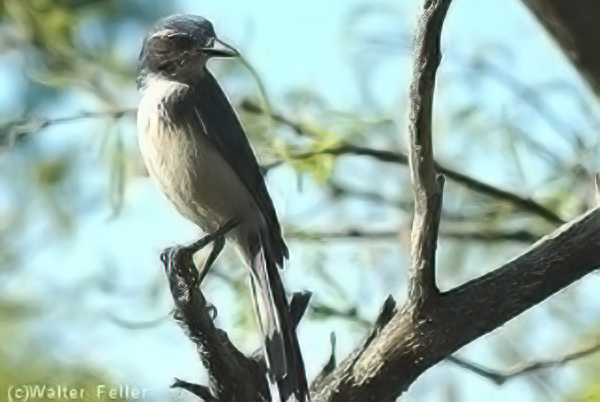Western Scrub-Jay
Aphelocoma woodhouseiiAphelocoma californica

Once treated as a single species, the Western Scrub-Jay has since been split, with Aphelocoma californica generally referring to the California Scrub-Jay, found mostly in coastal and foothill regions of California and into Baja California.
Inland forms are now often classified under different species such as the Woodhouse’s Scrub-Jay (Aphelocoma woodhouseii).
Comparison between Aphelocoma woodhouseii (Woodhouse’s Scrub-Jay) and Aphelocoma californica (California Scrub-Jay), two birds that used to be considered the same species:
1. Range and Habitat:
Woodhouse’s Scrub-Jay (A. woodhouseii): Found inland — in the interior West (Great Basin, Rocky Mountains, New Mexico, Arizona, Texas, parts of Mexico). Prefers pinyon-juniper woodlands, oak scrub, and dry forests.
California Scrub-Jay (A. californica): Found along the Pacific coast — mostly in California, southern Oregon, and northern Baja California. Favors coastal chaparral, oak woodlands, and suburban areas.
2. Coloration and Markings:
Woodhouse’s: Lighter blue overall, with paler gray underparts. No distinct “necklace” — the blue on the chest fades gradually into the gray. More slender, with a longer tail.
California: Richer, deeper blue with brighter contrast. Has a sharp, dark blue “necklace” or band across the upper chest. Slightly stockier body.
3. Voice and Behavior:
Woodhouse’s: Softer and more nasal calls. More secretive and quieter overall. Still intelligent and social, but often in smaller groups.
California: Louder, harsher calls — more aggressive and vocal. Common in backyards and urban areas — bolder around humans.
4. Genetics and Taxonomy:
These two were once lumped under “Western Scrub-Jay.”
In 2016, they were split into separate species based on DNA, vocal differences, and behavior.